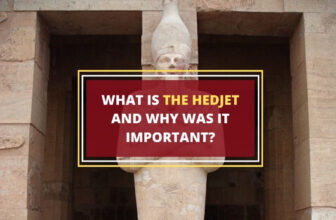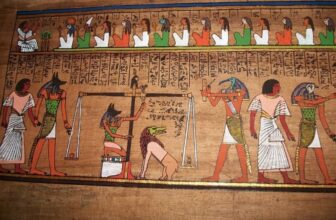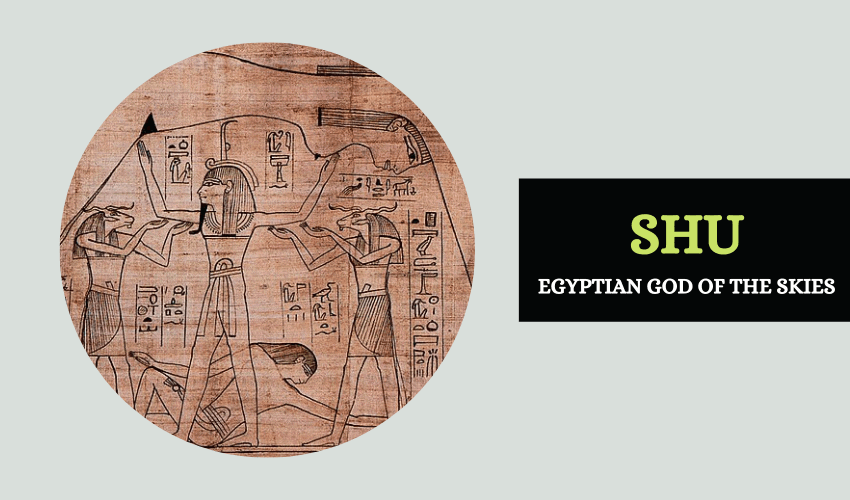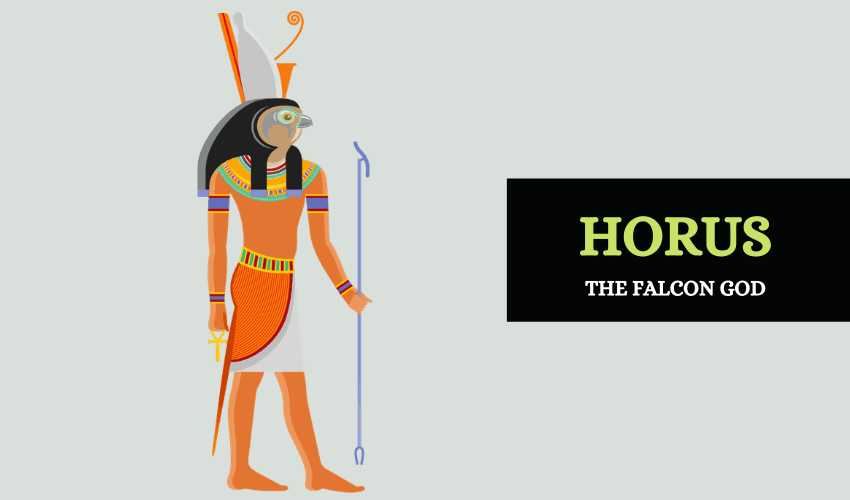
Table of Contents
Horus was one of the most important deities of ancient Egypt, and one of the most familiar to us today. His role in the myth of Osiris and his rule over Egypt influenced the Egyptian culture for millennia. His influence extended beyond Egypt and took root in cultures such as those of Greece and Rome. Here’s a closer look at his myth.
Who Was Horus?
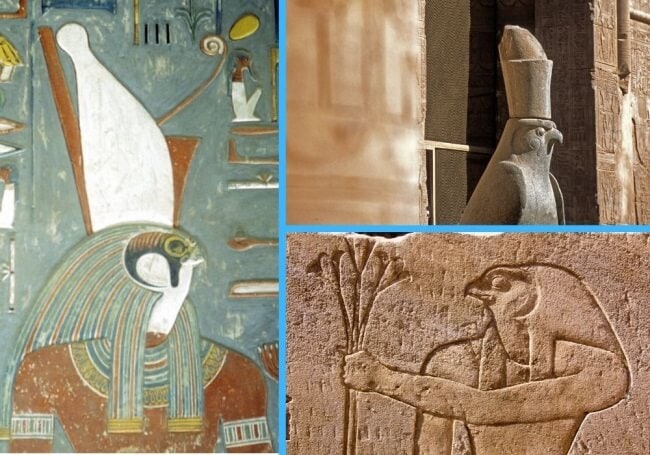
Horus was the falcon god associated with the sky, the sun, and war. He was the son of Osiris, the god of death, and Isis, the goddess of magic and fertility, and was born out of miraculous circumstances. Horus, together with his parents, formed a divine family triad which was worshipped in Abydos since very early times. During the Late Period, he was associated with Anubis and Bastet was said to be his sister in some accounts. In other accounts, he was the husband of Hathor, with whom he had a son, Ihy.
In the myths, there are some discrepancies since there has been a variety of falcon deities in ancient Egypt. However, Horus was the principal exponent of this group. The name Horus means falcon, ‘The Distant One‘ or more literally ‘One Who Is Above’.
Horus had strong associations with Pharaonic power. He became one of the main protectors of the kings of Ancient Egypt. He was the national tutelary deity of Egypt, i.e. the guardian and protector of the nation.
In his depictions, Horus appears as a peregrine falcon or a falcon-headed man. The falcon was respected for its dominion over the skies and ability to soar high. Since Horus also had associations with the sun, he’s sometimes depicted with a solar disk. However, most depictions show him wearing the pschent, the double crown worn by pharaohs in ancient Egypt.
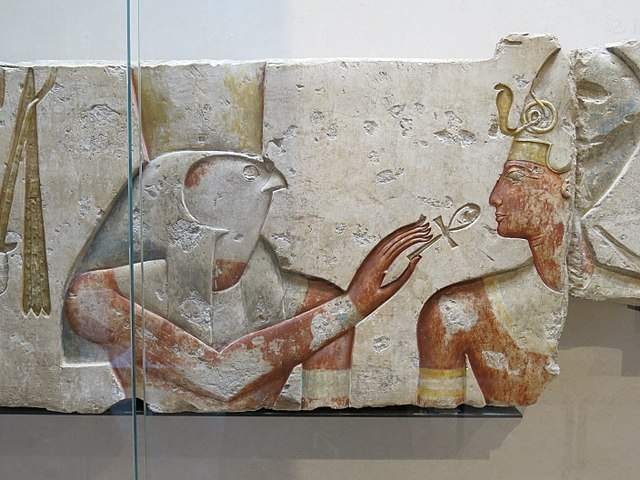
The Conception of Horus
The most important myth concerning Horus involves the death of his father, Osiris. There are variations to the myth, but the overview remains the same. Here are the main plot points to this interesting story:
1. Reign of Osiris
During the reign of Osiris, he and Isis taught humanity culture, religious worship, agriculture, and more. It was said to be the most prosperous time in Ancient Egypt. However, Osiris’ brother, Set, grew jealous of his brother’s success. He plotted to kill Osiris and usurp his throne. After having Osiris trapped in a wooden casket, he threw him into the Nile and the current took him away.
2. Isis rescues Osiris
Isis went to rescue her husband and finally found him in Byblos, on the coast of Phoenicia. She brought his body back to Egypt to revive his loved one with magic but Set discovered it. Set then cut his brother’s corpse into pieces and scattered them throughout the land so that Isis could not revive him. Isis was able to retrieve all the parts, except for Osiris’ penis. It had been thrown into the Nile and eaten by a catfish or a crab, depending on the source. Since Osiris was no longer complete, he could not stay and rule the living – he had to go to the Underworld.
3. Isis conceives Horus
Before Osiris left, Isis created a phallus using her magical powers. She then lay with Osiris and got pregnant with Horus. Osiris left, and the pregnant Isis remained in the surroundings of the Nile, hiding from the wrath of Set. She delivered Horus in the marshlands around the Nile Delta.
Isis stayed with Horus and protected him until he came of age and could defy his uncle. Set tried to find Isis and Horus and looked for them in the communities near the river without success. They lived as beggars and, in some cases, other deities such as Neith helped them. When Horus was older, he claimed the usurped throne of his father and fought Set for it.
Horus Fights for the Throne
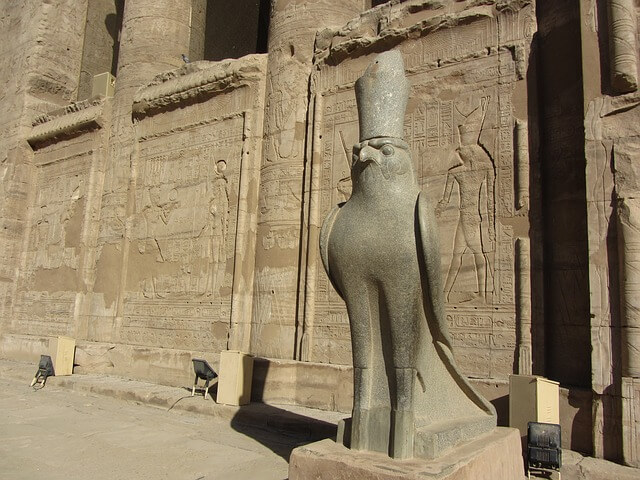
The story of Horus avenging his father and taking over the throne is one of the most famous of Egyptian myths, born out of the Osiris myth.
1. Horus and Seth
One of the most famous recollections of the conflict between Horus and Seth is The Contendings of Horus and Seth. The text presents the fight over the throne as a legal affair. Horus presented his case in front of the Ennead, the group of the most important deities of Ancient Egypt. There, he challenged Set’s right to reign, given the fact that he had usurped the throne from his father. The god Ra presided over the Ennead, and Set was one of the nine deities who formed it.
After the prosperous reign of Osiris, Seth resented all the gifts he had given to humanity. His domain was suffering famine and drought. Seth was not a good ruler, and in this sense, most of the gods of the Ennead voted in favor of Horus.
The two contending gods engaged in a series of tasks, contests, and battles. Horus was the winner of all of them, thus strengthening his claim to the throne. In one of the fights, Seth injured the eye of Horus, separating it into six pieces. Although the god Thoth restored the eye, it remained a powerful symbol of Ancient Egypt, known as the Eye of Horus.
2. Horus and Ra
Even though Horus had the favor of the other gods and had defeated his uncle in all the battles and contests, Ra deemed him too young and unwise to rule. The conflict for the throne would drag on for another 80 years, as Horus proved himself time and time again, while maturing in the process.
3. The Intervention of Isis
Tired of waiting for Ra to change his mind, Isis decided to intervene in favor of her son. She disguised herself as a widow and sat outside the place where Set was staying on an island, waiting for him to pass. When the king appeared, she wept for him to listen to her and come closer. Set asked her what was wrong, and she told him the story of her husband, who had died and whose land had been seized by a foreigner.
Shocked by this story, Set pledged to find and condemn the man who had done such a horrible thing. He swore to make the man pay and restore the land of the lady to her and her son. Then, Isis revealed herself and showed the other gods what Set had declared. Set condemned himself, and the gods agreed that Horus should be the King of Egypt. They exiled Set into the desert wastelands, and Horus ruled over Egypt.
4. Horus the King
As the King of Egypt, Horus restored balance and gave the land the prosperity it had had during the reign of Osiris. From then onwards, Horus was the protector of the kings, who ruled under a Horus Name so that he would give them their favor. The pharaohs of Egypt associated themselves with Horus in life and with Osiris in the Underworld.
Apart from his good deeds, people worshipped Horus because he symbolized the unification of the two lands of Egypt: Upper and Lower Egypt. Due to this, many of his depictions show him wearing the Double Crown, which combined the red crown of Lower Egypt with the white crown of Upper Egypt.
Symbolism of Horus
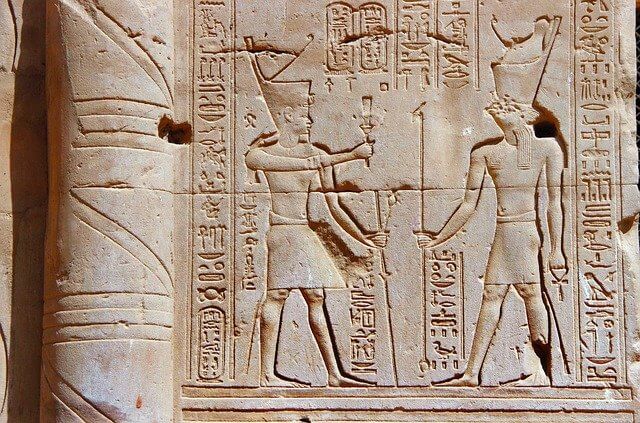
Horus was believed to be the first divine king of Egypt, meaning that all other pharaohs were descendants of Horus. Horus was the protector of every ruler of Egypt, and pharaohs were believed to be the living Horus. He was associated with kingship and was the personification of royal and divine power.
Scholars argue that Horus may have been used to describe and justify the supreme power of the pharaohs. By identifying the pharaoh with Horus, who represented the divine right to rule over all the land, the pharaoh was granted the same power, and his rule was theologically justified.
Worship of Horus
People worshipped Horus as a good king since the early stages of Egyptian history. Horus was a protector for the pharaohs and all the Egyptians. He had temples and cults throughout the land. In some cases, people associated Horus with war because of the conflict with Set. They prayed for his favor before battles and invoked him afterward for the victory celebration. Egyptians also invoked Horus in funerals, for him to provide the dead with safe passage into the afterlife.
The Eye of Horus
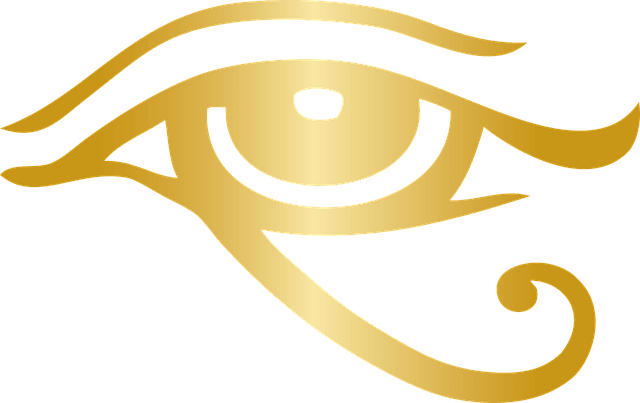
The Eye of Horus, also known as the Wadjet, was a cultural symbol of Ancient Egypt and the most important symbol associated with Horus. It originated from the fight between Horus and Set, and represented healing, protection, and restoration. In this sense, people used the Eye of Horus in amulets.
After defeating Set and becoming King, Hathor (Thoth, in other accounts) restored the eye of Horus, making it a symbol of health and power. Some myths say that Horus tried to offer his eye to Osiris so that he could come back to life. This fostered the association of the Eye of Horus with funeral amulets.
In some accounts, Set divided Osiris’ eye into six parts, which symbolized the six senses, including thought.
Facts About Horus
Horus was a protector god and the national tutelary deity of Ancient Egypt.
Horus’ main symbol is the Eye of Horus.
Horus is the offspring of Osiris and Isis.
Horus is said to have married Hathor.
Horus had one child with Hathor, Ihy.
Some accounts include Anubis and Bastet among siblings.
In Brief
Horus remains one of the most famous deities of Egyptian mythology. He influenced the succession of the throne and was essential in the restoration of prosperous times in Ancient Egypt. Horus remains one of the most depicted and easily recognized of the Egyptian deities.




